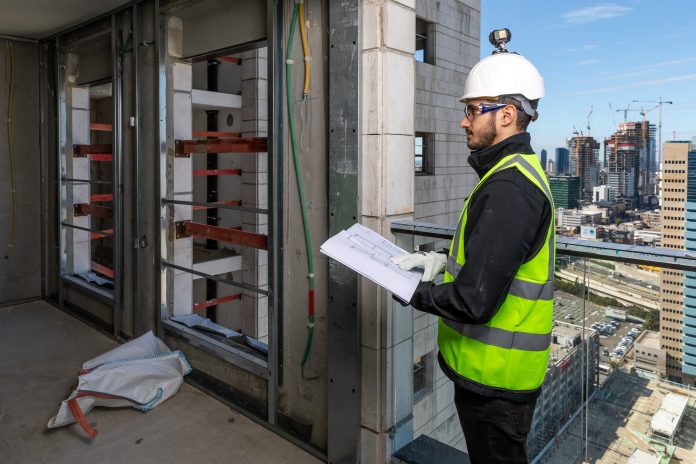Whilst portions of the construction industry are fluent in BIM, IoT, CDEs and more – with 3D modelling one of the main methodologies and processes that are changing the landscape – there is still great hesitation from some areas of the sector. Roy Danon, CEO and co-founder of Buildots explains why BIM is the single enabler for many modern technologies that are being developed for the sector, making it critical for companies to adopt BIM so they won’t fall behind in the race
The construction industry’s digital journey encompasses many aspects including apps, AI, IoT and other bespoke software. They are becoming increasingly more important across construction projects, as businesses are realising that complex processes are made easier with the aid of technology. With digital solutions, risks are being avoided and mitigated, and once arduous programmes of work are now far more efficient and seamless.
But However, the technology that is making the most transformative difference is BIM, which is at the core of the industry’s digital offering. BIM is the first time that the industry has an agreed end-product that it is aiming to create through its delivery process – it’s the first time the different pieces of the puzzle are properly coordinated. It is therefore creating (well, in most cases) an agreed goal for the first few years of construction’s process.
HILTI for example, recently announced its JAIBOT, a robot aimed at replacing some of the repetitive and dangerous works conducted on site. It requires good and final plans to operate, otherwise it will not be able to drill holes properly.
Other technologies such as AI-based programme generation and optimisation, need BIM to fully grasp the complexity of the project it is planning, and provide the best course of action.
Buildots puts BIM at the centre of the site’s day to day operations. It leverages the capacity of off-the-shelf 360-degree cameras to inject as-built data into BIM models, creating a perfect view of the status of works. On top of the live model, an advanced dashboard system creates the construction control centre, showing progress reports, monthly valuations, and flags any divergences from designs or programme.
Once the model becomes live, other technology vendors can tap into the model to receive real-time progress information, to trigger shipments, streamline payments, or generate better execution plans for the following week.
Construction companies that invest in creating workflows around BIM are well-positioned to quickly leverage new products that can directly affect their bottom lines.
BIM as the enabler: What are the other benefits?
The NBS’s National BIM Report 2019 highlights a 60% increase in BIM adoption from 2011 to 2019, which suggests that BIM is being used more widely across construction projects. The government’s Construction 2025 targets will further help BIM to raise its profile. To fulfil the government’s targets, many contractors and asset owners are turning to smarter and greener methodologies and processes. BIM’s enabling value plays an important role in this case, as these parties will want to be able to predict their footprint prior to construction and measure it once an asset is in use.
BIM’s value will become further recognised as the industry strives towards greater quality and traceability. Dame Judith Hackitt’s golden thread of information has been lauded as one of the most prominent methods the industry should adhere to in order to ensure best practice across the board. To align with this process, there will be a higher demand from companies to know and understand the role of visible data within an asset or project. Having a clear audit trail of what has been done, who did it and how it was installed will create this all-important golden thread of information. It will also highlight the value of data and information on a digital sphere; data that isn’t gathering dust in a filing cabinet or stowed away on a server, but essential to informing the decision-making process regarding the performance of a building.
This is where the concept of connected data comes in. Historic data stored across multiple, disparate silos can be of use to the asset owner, yet the way in which it is held often renders the information inaccessible and inefficient, if it needs to be referenced. Neither can this data help to craft a reliable like-for-like image of how a building is performing; old data is a reference of what occurred and not necessarily a tool that confidently reports on how an asset is currently operating.
In the case of the data created using Buildots, in addition to the immediate value for the construction project team, the collected historical data of multiple projects can be combined to create even great value for the industry. A construction company could use that to benchmark its projects and activities, decide how to better plan its next projects, or focus on construction methods that are more suitable for its workflows and expertise. It creates opportunities to identify repeating issues or common bottlenecks throughout the entire company’s projects portfolio, and develop new workflows and processes to avoid those in the future.
Both an enabler and enhancer of processes, BIM is changing the terrain of a technology-resistant construction industry. We expect many of the new technologies to only work on BIM-enabled projects, where it will widen the productivity gap between companies who have adopted change versus those that stayed behind.
Roy Danon
CEO and co-founder
Buildots
LinkedIn: Buildots














